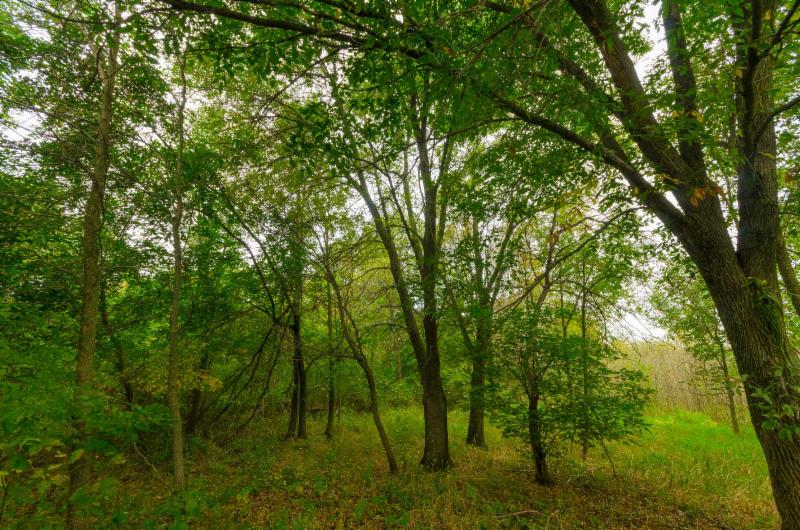
Initiatives Aim to Bring Back Our Oak Savannas
By Patrick M. O'Connell/Chicago Tribune
Photo by Joshua Mayer/flickr
Before the farms began to stretch as far as the eye can see on the Midwestern landscape, before the fur trappers and settlers established towns along the Chicago area's rivers and lakes, there was the majestic oak tree.
They grew by the millions, hundreds of years old, in stands called savannas, one of the defining characteristics of the Midwestern topography.
Today, the savannas are virtually gone, a casualty of American industriousness and prosperity.
But along the way, something else was lost - a vital link in the area's ecosystem, one that provided shelter for a range of plants, animals and insects that thrived under the oak tree's protective canopy.
Now, a broad-based effort is looking to bring them back.
Scientists, foresters, naturalists and environmental organizations in the upper Midwest have launched a series of initiatives to restore what remains of the bur and white oak savanna ecosystems and woodlands.
|
Watch: How Algae Blooms Threaten the Great Lakes
Milwaukee Journal Sentinel
Lake Erie was plagued by phosphorus-driven algae outbreaks in the middle of the last century. Now the algae blooms are back, due largely to an increase in a highly-potent form of phosphorus running off farm fields in the lake's western basin.
The McGraw Center for Conservation Leadership is developing proposals to combat nutrient runoff and improve water quality. To learn more about McGraw's Heartland Waters Initiative, click here.
|
Why the Public Lands Fight Matters to All Who Love the Outdoors
Field & Stream
Photo by Bureau of Land Management/flickr
This is your fight. Don't be fooled. If you live outside the West, don't assume that the efforts to transfer, and inevitably sell, our vast public lands isn't any of your business. What happens in Vegas, this time around, won't stay in Vegas. This crazy idea to transfer public lands will gain traction in the Midwest, and the East, and the North, from sea to shining sea.
The federal government owns only 4 percent of lands east of the Mississippi River, but that 4 percent includes, for starters, 1.25 million acres of national forest in North Carolina and another 1.2 million acres in Florida. But such limited federal ownership makes the fight in the East all the more critical. Already, state legislators in at least four Eastern states-Arkansas, Georgia, Tennessee, and Virginia-have put forth resolutions favoring the public-lands transfer. The Everglades, the Ozarks, the Southern Appalachians-it's all up for grabs.
This is your fight if public land anywhere, of any size, matters to you. This is the time to draw the line in the very dirt you own. Don't give up a single Arkansas riverbottom, West Virginia mountain holler, or South Carolina marsh. Because if we do, we will never get it back. And America will never be the same.
|
Here's the Latest Threat to Our Most Important Wetlands
By Shannon Tompkins/Houston Chronicle
Photo by americaswildlife/flickr
Science fiction abounds with disturbing narratives in which intentional introduction of seemingly benign or beneficial alien species to a new environment results in apocalyptic consequences.
Sadly, so does science non-fiction.
A real-world example of this is playing out in Louisiana, where conservation scientists with the state's wildlife, fisheries and agriculture agencies are scrambling to learn more about a newly arrived, non-native organism causing significant damage to some of the most ecologically and economically important wetland habitat in the nation. They are downright frightened by the very real threat of intentional spread of the problem.
|

Lessons Learned Over 60 Years in 'Osprey Garden'
By Anne Semmes/AllAboutBirds.org
Photo by Alberto_V05/flickr
Much of biologist-naturalist Paul Spitzer's life has moved in time with the seasonal rhythms of one bird, the Osprey, and one place-the "Osprey garden."
In late spring he paddles his canoe into the Great Island saltmarsh, 500 acres of prime Osprey habitat where the Connecticut River flows into Long Island Sound. In this marshy inlet, Spitzer checks for action in nests among 35 Osprey platforms that have been erected here since the late 1950s. As he disembarks, the resident Ospreys take to anxious flight. He raises a pole topped with a mirror over a platform nest. These days, he sees abundant breeding success in the mirror's reflection-three healthy young birds with ragged crests and brown-spangled wings. But it wasn't always this way.
Spitzer first stepped onto Great Island nearly 60 years ago, as an 11-year-old boy in 1957. That year, he accompanied birding legend Roger Tory Peterson on a Christmas Bird Count. Thus began a mentorship that set Spitzer onto a career path to becoming a ecologist.
When Spitzer graduated from college, Peterson urged him to take up the question of what was causing a sudden and drastic decline among the Ospreys.
"At that time, the curtain was rising on the great DDT drama," says Spitzer.
|
|
|
|
|
|